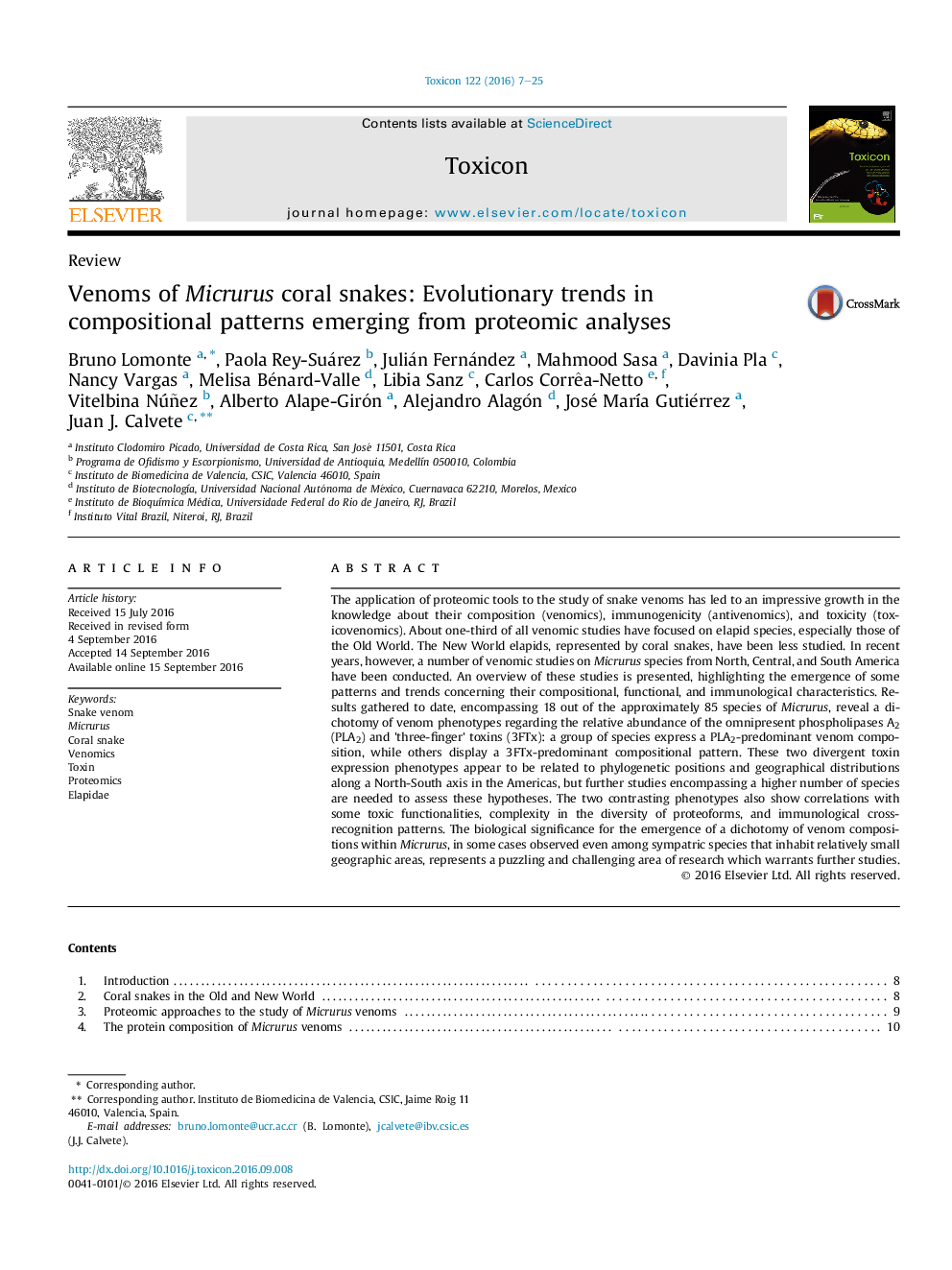| کد مقاله | کد نشریه | سال انتشار | مقاله انگلیسی | نسخه تمام متن |
|---|---|---|---|---|
| 5519582 | 1544114 | 2016 | 19 صفحه PDF | دانلود رایگان |

- An overview of proteomic studies on Micrurus venoms is presented.
- A phenotypic dichotomy in venom composition is revealed.
- Evolutionary trends and patterns of venom composition are discussed.
- Venom composition has toxicological and immunological implications.
The application of proteomic tools to the study of snake venoms has led to an impressive growth in the knowledge about their composition (venomics), immunogenicity (antivenomics), and toxicity (toxicovenomics). About one-third of all venomic studies have focused on elapid species, especially those of the Old World. The New World elapids, represented by coral snakes, have been less studied. In recent years, however, a number of venomic studies on Micrurus species from North, Central, and South America have been conducted. An overview of these studies is presented, highlighting the emergence of some patterns and trends concerning their compositional, functional, and immunological characteristics. Results gathered to date, encompassing 18 out of the approximately 85 species of Micrurus, reveal a dichotomy of venom phenotypes regarding the relative abundance of the omnipresent phospholipases A2 (PLA2) and 'three-finger' toxins (3FTx): a group of species express a PLA2-predominant venom composition, while others display a 3FTx-predominant compositional pattern. These two divergent toxin expression phenotypes appear to be related to phylogenetic positions and geographical distributions along a North-South axis in the Americas, but further studies encompassing a higher number of species are needed to assess these hypotheses. The two contrasting phenotypes also show correlations with some toxic functionalities, complexity in the diversity of proteoforms, and immunological cross-recognition patterns. The biological significance for the emergence of a dichotomy of venom compositions within Micrurus, in some cases observed even among sympatric species that inhabit relatively small geographic areas, represents a puzzling and challenging area of research which warrants further studies.
Journal: Toxicon - Volume 122, November 2016, Pages 7-25